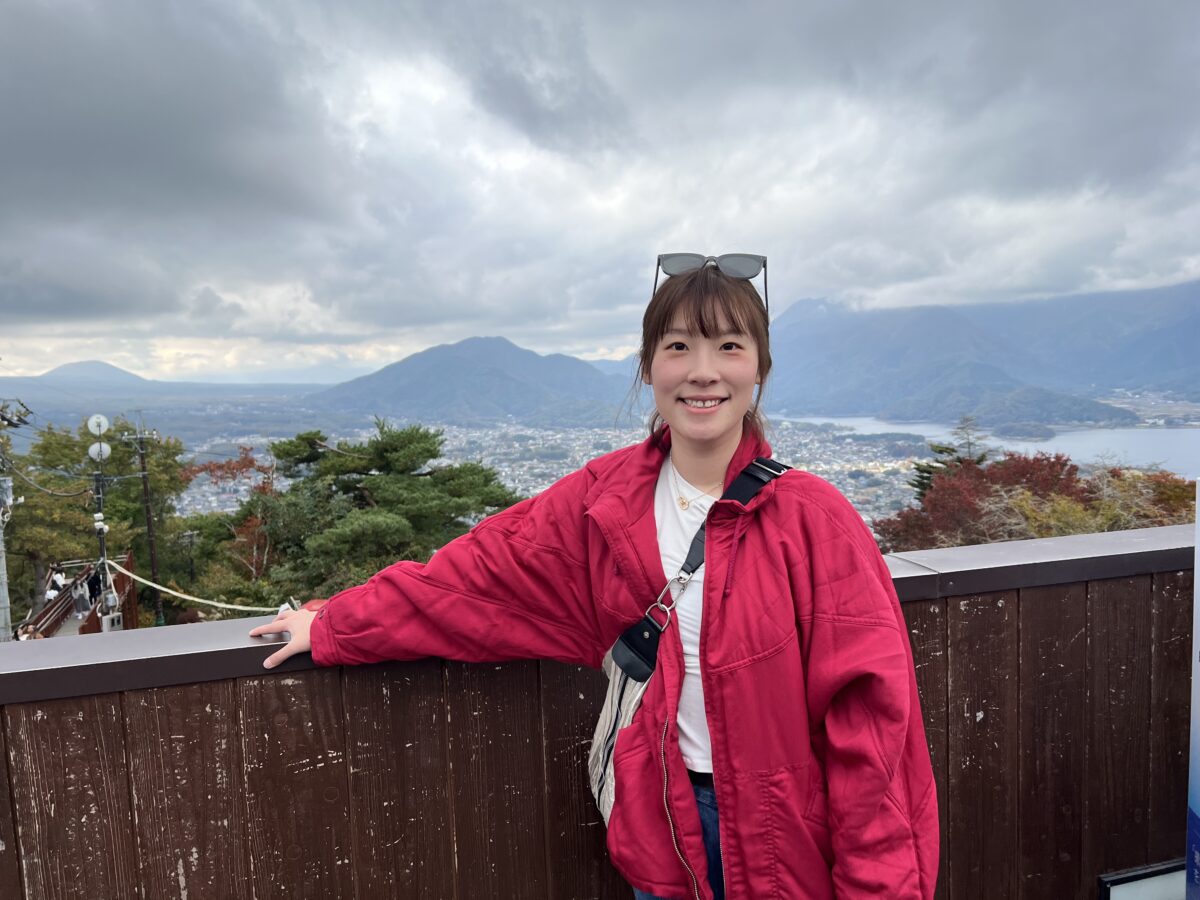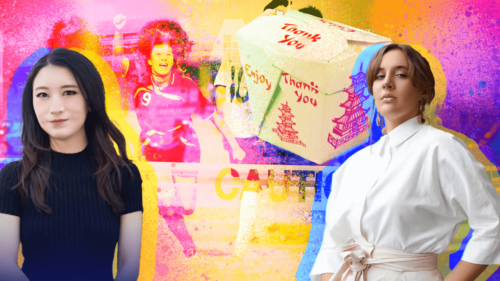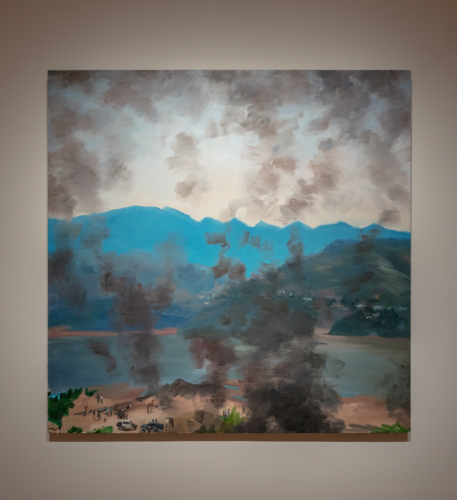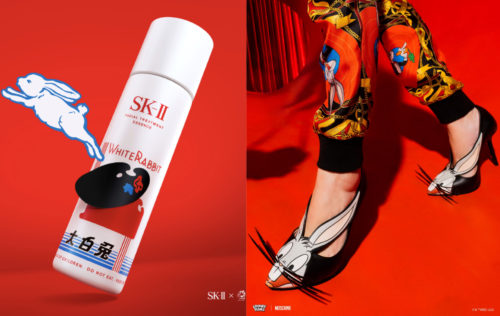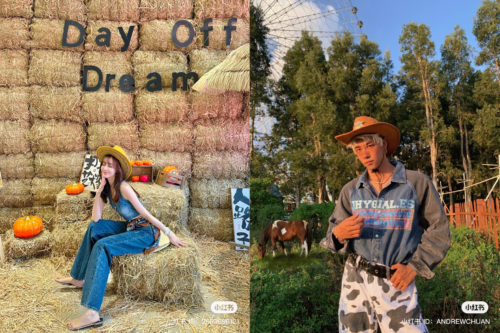A fashion exhibition in Shanghai puts sustainability front and center
More than 30 environmentally conscious artists and designers join forces at “CanU,” a new exhibition in Shanghai that aims to educate, engage, and empower people about sustainability in fashion.

There has seemingly never been a better time to launch a sustainable fashion brand in China. Chinese consumers — particularly millennials and Gen Z — increasingly say they think brands that are highly conscious of their carbon footprints are cool and applaudable.
Yet a frustrating paradox remains at the heart of green businesses in fashion: Few consumers who report positive attitudes toward eco-friendly clothing items actually understand what sustainable means in fashion or know where to start or follow through with their wallets. In a recent study (in Chinese) surveying more than nearly 2,500 people in the country, almost 90% of the participants said they wanted to buy purpose-driven brands that advocate sustainability, yet only about 50% actually did so in the past.

A new exhibition in Shanghai is hoping to narrow this “intention-action” gap. Opened last Friday and running to August 2, CanU is the first fashion exhibition of its kind in China, placing climate issues front and center, and proposing to inspire visitors to approach fashion purchases with a sense of environmental mindfulness.
Curated by Dān Cuī 丹崔, a former fashion director at GQ China and the founder of sustainable fashion content platform CanU, the exhibition is located at the Spanish-style garden residence that once housed the Shanghai Animation Film Studio. It’s divided into 12 spaces that connect thematically, each showcasing work by an eclectic group of more than 30 artists and fashion designers who are brought together to explore the meaning of sustainability. But rather than an in-your-face one-way preaching session, the exhibition is designed to initiate a dialogue with visitors, who are confronted throughout the show with nine climate-related questions that start with “Can You?”

Dries van Noten and Zhou Xun
Spread across two floors, the exhibition begins on an emotional note enhanced by star power. Named “Can You Recall?,” the first section hosts contributions from a star-studded roster of influential figures in fashion — including Belgian designer Dries van Noten, longtime Chanel ambassador Zhōu Xùn 周迅, and China’s first supermodel, Liú Wén 刘雯 — who are invited to share a piece of clothing that holds the memory of a special moment or evokes a certain feeling for them.
Notable items on display include a Balenciaga coat gifted to Liu Wen by designer Nicolas Ghesquièree, an evening gown made of recycled industrial materials by Chinese designer Shie Lyu(Xī Lù 悉麓) during Shanghai’s lockdown, and a Celine dress with a cigarette burn, which reminds its owner, Táng Shuāng 唐霜, a fashion critic and former deputy publisher at Vogue China, of a boozy birthday party.



“The collection aims to highlight the stories behind these garments and their emotional connections with their owners. When I proposed the idea to celebrity friends, brands, and staff, they were immediately on board,” Cui told WSJ. Magazine (in Chinese), a digital publisher with a focus on men’s style. People are taught that clothing that has gotten old should be dismissed as “out of season” and discarded, but the section, Cui said, is meant to flip that sentiment, encouraging exhibition-goers to see their wardrobes in a different light and rethink the second life of a piece of old clothing due to its sentimental value.
The end of the exhibition will be the start of a new lifespan for the item on display as well. According to Cui, the “Can You Recall?” part of the show is scheduled to go on tour across the country and be put up for auction eventually. All proceedings from the auction will go toward independent fashion designers promoting environmental responsibility and research on innovative materials with lower environmental impacts.
More than a fashion exhibition
A strategic partner of Shanghai Fashion Week, the largest fashion event in China, CanU is the co-organizer of Ulio, a biannual conference that convenes Chinese brands and textile suppliers to exchange ideas about sustainable materials and other new frontiers of fashion. When conceiving the exhibition, Cui said he wanted it to be more consumer-facing and be perceived as something more than a mere showcase of beautiful clothes, but rather an immersive, artistic experience that provokes thoughts.
At the exhibition, a room labeled “Can You Consume?” is where Cui’s vision comes to fruition. Themed around upcycling in fashion, the space contains an unconventional dining table with objects created by 11 artists. Each item is made from waste produced in their daily life and by their artistic work. Just the way food goes through the cycle of being produced, consumed, discarded, repurposed, and then brought back to the dining table, the group art project shows the potential of waste caused in the fashion industry being repurposed for material and spiritual consumption again.



For “Eat the Poem,” an assembly of handmade plush and wooden toys resembling cooking tools, Chinese artists Xiang Gao and Tin Gao sourced inventories and wastes from Yiwu, the world’s largest commodity wholesale market, to visualize the problem of overproduction. Chinese makeup artist Valentina Li, who has been profiled by Vogue for her exquisite face painting, contributed a handcrafted item named “The Beginning, and the All,” which sees her deconstructing and putting together water bottles consumed at fashion shoots.
Going beyond the space of “Can You Consume?” art installations, big or small, are sprinkled throughout the exhibition. For the room “Can You Imagine?,” Chinese multimedia artist Celia Ju created an immersive environment showing how humans impact their natural environment. For its contribution to the show, Bloop Bloop, a Shanghai-based multi-disciplinary design collective, melted metal used in its previous work and reshaped it into an abstract alien flower. The large-scale installation, named “Rain Before Rainbow” and adorned with recycled coffee pods, sits on the exterior of the exhibition’s house.


Fashion of the future
The second floor of the exhibition is largely dedicated to the future of fashion. Six boundary-pushing looks from the Spring/Summer 2021 collection by threeASFOUR, a trio of avant-garde designers based in New York City, are on view in the “Can You Explore?” section. Drawing inspiration from architecture and using innovative laser-cutting techniques, the designs are “an ode to the plant world and the significance of Vesica Piscis — the almond shape made by the intersection of two circles, which is also called the Womb of All Creation and the Eye of Horus,” said Gabi Asfour, the co-designer of threeASFOUR, in an interview.
Surreal designs can also be spotted in the “Can You Resolve?” room, where BUJ Studio, an experimental fashion brand founded and directed by Raque Buj, presents visitors with a collection of avant-garde looks from its 2021 project named “NIDOS” (meaning “nests” in English), which investigates a new way of design that’s more sustainable and sensitive toward the environment.



Other work in the show includes textile samples from Chinese startup Peelsphere, which is known for leather-alternative biomaterial made from fruit waste and algae, as well as a screening room dedicated to mini documentaries produced by Paris-based design studio About a Worker, which gives a platform for garment factory workers to design their own uniform in exploration of the relationship between laborers, designers, and customers.
“CanU” is at Yongfu Road No. 52, Shanghai, from July 22 until August 2, 2022. Head here to book a ticket.
